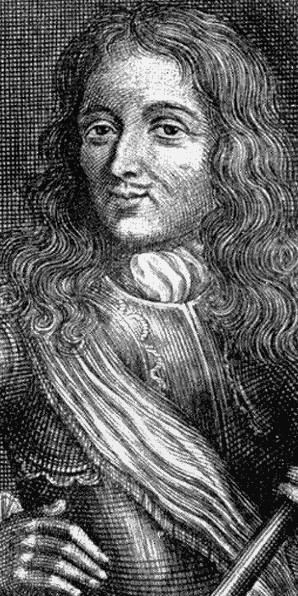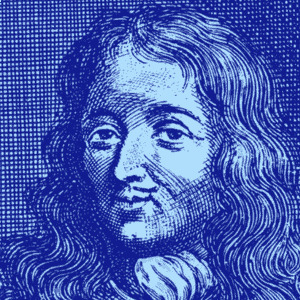What did d'Artagnan look like?
Alexander Dumas’ d’Artagnan had no face. We haven’t found a single portrait permitting us to identify him with any degree of precision.
 One solitary image gives us an idea of what he might have looked like: an engraving in black and white, which has never been authenticated…
One solitary image gives us an idea of what he might have looked like: an engraving in black and white, which has never been authenticated…
The bust wears armor, shoulder-length hair, a thin mustache trimmed according to the fashion of the time, an oval but well-proportioned face with a broad forehead, somewhat prominent cheekbones, a slightly hooked nose, sharp eyes, the lips sporting a shadow of a smile: This is how d’Artagnan appears, commander’s baton in hand, in the engraving that figures at the beginning of his apocryphal memoirs written by Courtilz de Sandras...
...The engraving is anonymous and undated. Should we accord any authenticity to it? It was probably based on a portrait of the lieutenant-captain of the musketeers that has since disappeared. Though of rather mediocre quality, the engraving does allow us to perceive the elegance of a thin and nervous silhouette. D’Artagnan was a musketeer. And to be a musketeer, one had to be well-built, somewhat tall, according to the king’s wishes.
Odile Bordaz
And what can be said of his personality?
First and foremost, d’Artagnan was a Gascon, and as such he certainly bore the characteristic personality traits of a southern gentleman.
He was also kind, faithful, courageous, beloved by the powerful men he served with zeal, respected by all and sufficiently heroic to have served as the inspiration for his fictional double –that mythic hero– who was neither the same nor entirely different from the real man.
D’Artagnan is the ultimate Gascon, or better, the ultimate Frenchman: of a sharp and balanced mind, a supple and vigorous body, and good and compassionate heart, unfailing in the face of any difficulty, undaunted by any danger, insensitive to no man’s misfortune, equally skilled in displays of force and finesse, but always as brave and true as his sword.
Charles de Batz de Castelmore, known as d’Artagnan, (…) never had the chance to enjoy this universal fame, neither during his lifetime nor long after his death...
...He was most certainly a real gentleman, an experienced soldier, an adroit diplomat when the occasion demanded it, and, in all circumstances, a suave and nimble Gascon without being obsequious.
Charles Samaran
Any portrait of d’Artagnan can only be realized by the strokes of an impressionist: little bits of testimony, suppositions and deductions.
In the end, everything that has been said about him could be considered a just depiction … at least in part...
...If these depictions of our hero have all taken their inspiration from the character created by Dumas, the latter found his inspiration in the apocryphal memoirs of Courtilz de Sandras before him, who in turn drew his inspiration from d’Artagnan’s real life.
Despite his valor and his courage, d’Artagnan was not without a few faults. Notably, he seems to have been doted, like his friends, with a difficult character (…), unyielding in his pride, sure of his self-worth, at the same time sullen and contentious, argumentative, disposed to endless debate.
Armand Praviel
As an authentic gentleman of the seventeenth century, a true “honnête homme”, to take an expression from that time, d’Artagnan assembled all the qualities of an elite officer and an irreproachable gentleman.
Odile Bordaz
Benevolent and humane (…) inspiring the emotion of Madame de Sévigné, among others…
Stéphane Baumont
An honnête homme [gentleman of character] and who merited the esteem and the trust that the king placed in him.
Mlle de Montpensier
And what of women? In this area, Courtilz de Sandras credited him –and here one only gives credit to the rich—with many affaires that should obviously not be taken too seriously (…) We would be hard pressed to find any proof (…)
...But in the end, if all these romantic adventures so generously accorded to the Gascon by novelists are not exactly historical truth, they reflect fairly well the chaotic love life of a young soldier at the end of the reign of Louis XIII or during the regency of Anne of Austria.
Jean-Christian Petitfils
If history has rendered d’Artagnan his verity, she is too poor, too dry to bring him back to life. And so, to give this Gascon back his dynamic, intrepid, joyful and lucid vitality, the intervention of the novel was required (…) Yes, making this oh, so typical Gascon personality more real than life –marrying realism and panache, solidity and fantasy, fire and ice—required a Dumas!
André Laffargue
